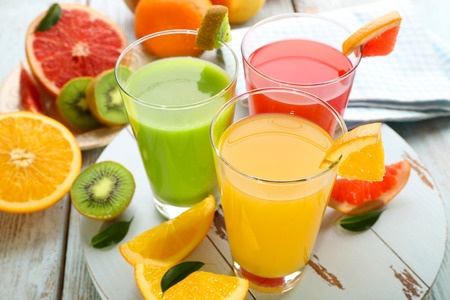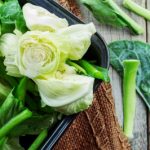
The degradation of vitamin C (ascorbic acid) always continues to create interest because it has such a vital function to play both in the maintenance of quality and in nutrition, especially in beverages. Light induced losses of vitamin C coupled with the presence of oxygen have been problematic for product developers wishing to make vitamin C claims over the shelf-life of the beverage. UV processing is also developing as a major alternative to thermal processing of ciders in particular. In clear packaged beverages, the losses are more acute and it has been a source of speculation as to whether all the mechanisms for degradation have been identified and how vitamin C losses might be reduced. Studies on juice drinks commissioned by industry looked for pragmatic methods to at least understand what was occurring to vitamin C in a beverage and whether one juice would perform better than another (Miller and Rice-Evans, 1997).
The general mechanism by which ascorbic acid acts as such a potent antioxidant is by mopping up free radicals through the formation of ascorbyl radicals. Yamaguchi et al., (1999) were looking initially at the radical scavenging behaviour of a grape seed extract but also reported on the strong superoxide and hydroxyl radical scavenging activities of vitamin C when they noticed an increase in methyl radical production. They applied the following system H2O2/NaOH/DMSO to evaluate a number of antioxidants and followed reaction progress using ESR (Electron Spin Resonance). The critical functional group in ascorbic acid is its ene-diol structure which is excellent at radical scavenging (Darkwa et al., 1998). There is a synergy with phenolic and anthocyanin molecules too in trapping free radicals, especially quercetin (Miller and Rice-Evans, 1997).
A couple of recent papers describe further research into the mechanisms behind ultraviolet induced oxidation of vitamin C in a model beverage (Tikekar et al., 2011a, b). The model system might be similar to an apple juice using 0.5% w/w malic acid (pH 3.3) with loss of ascorbic acid and an increase in the breakdown products, dehydroascorbic acid (DHA) and 2,3-diketogulonic acid (DKGA). Using electron spin resonance spectroscopy (ESR) to detect radical formation, the ascorbyl radical (AA•) formed upto 3 hours after the initial UV treatment, even in the dark. Their finding was that UV-induced degradation was similar to that catalysed by metals. They noted that fructose significantly increased vitamin C loss and was proportional to its concentration, whilst sucrose and glucose were not influential. The studies also have a bearing on the quality of processed juice following UV light pasteurisation. It is now common for apple juice and ciders, particularly on the US East for processors to use this particular method. Understanding how severe vitamin C loss is likely to be will enable processors to tailor production methods to avoid too high a loss. The other benefit it seems is the reduction in patulin, a noted toxic substance mainly found in apple and pear juices.
References
Darkwa, J., Mundoma, C., & Simoti, R. H. (1998). Antioxidant chemistry reactivity and oxidation of DL cysteine by some common oxidants. J. Chemical Society-Faraday Transactions, 94 (14), pp. 1971–1978
Miller, N. J., & Rice-Evans, C. (1997). The relative contributions of ascorbic acid and phenolic antioxidants to the total antioxidant activity of orange and apple fruit juices and blackcurrant drink. Food Chemistry, 60(3), pp. 331–337.
Tikekar, R.V., Anantheswaran, R.C., Elias, R.J. LaBorde, L.F. (2011a) Ultraviolet-Induced Oxidation of Ascorbic Acid in a Model Juice System: Identification of Degradation Products. J. Agric. Food Chem. 59 (15) pp. 8244-8248
__________________________________________(2011b) Ascorbic Acid Degradation in a Model Apple Juice System and in Apple Juice during Ultraviolet Processing and Storage. J. Food Sci., 76 (2) pp. H62-H71
Yamaguchi, F., Yoshimura, Y., Nakazawa, H., & Ariga, A. (1999). Free radical scavenging activity of grape seed extract and antioxidants by electron spin resonance spectrometry in an H2O2/NaOH/DMSO system. J. Agric. Food Chemistry, 47(7), pp. 2544–2548.


I have been investigating vitamin C loss for a school project and studying different fruit juices. I find strawberry juice one of the worst for some reason and it seems to accelerate even when I add vitamin C in a tablet to the juice and then pasteurise it. I guess the heat is damaging the product and the vitamin.